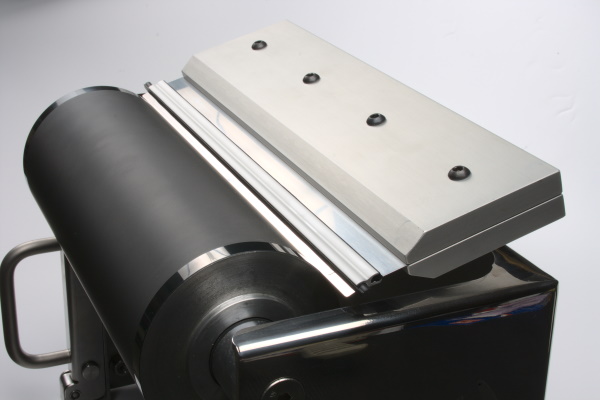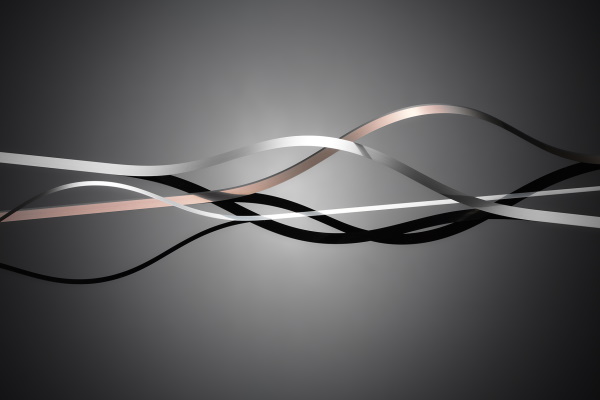Gravure blade holders
An approch to increased process flexibility and reduced operating costs in rotogravure printing
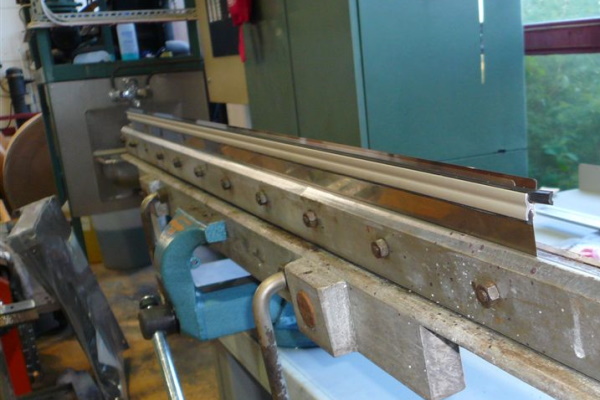
Characteristics of the gravure printing process
Price pressure in the printing and packaging industry is omnipresent. While gravure printing is widely perceived as the printing technology that offers the highest and most consistent print quality at high speeds, the relatively high set up costs of the gravure printing process do pose a challenge. Especially in flexible packaging, where flexographic printing has grown very strong over the years, gravure printers need to optimize their technology and reduce the costs of their production processes constantly in order to remain competitive.
In doing so, what could be more obvious than looking at the printing deck itself, also referred to as the ‘heart of the gravure printing press’. The printing deck consists of four main components:
- The gravure cylinder, engraved with the print image
- The impression roller, which presses the substrate (web) against the impression cylinder
- The ink fountain, into which the rotating gravure cylinder dips to take up ink, and
- The doctor blade, which scrapes off excessive ink from the gravure cylinder.
The efficiency and precision of the doctor blade wipe is crucial for the final print quality. Most gravure presses work with positive doctoring, meaning the blade is set against the gravure cylinder in an acute angle with rotation direction. An angle between 65° and 75° is considered to be optimal.
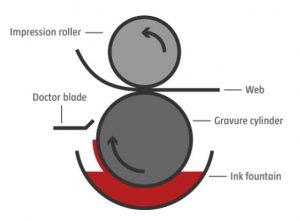
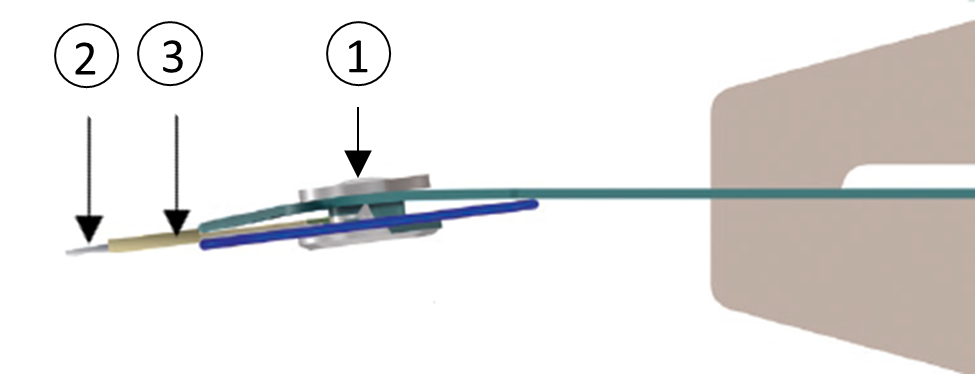
How the blade holder concept works
That is where the blade holder concept comes in. This concept is based on the lamella technology but takes the development a step further by decreasing the blade cost and at the same time reducing the handling time which ultimately means true savings in operating costs. The blade holder features three key components:
- The blade holder itself
- The doctor blade (‘strip blade’)
- The backup blade
How does it work? The blade holder itself can be considered as an adaptor that is clamped in place of the “conventional” wide lamella blade. For doctoring, only a narrow 10 mm wide steel strip with a round tip is used. The same high printing quality can easily be achieved, because the thickness of the strip blade is the same as that of the lamella tip – typically between 0.065 mm and 0.15 mm. To accommodate different ink types and lifetime expectations, the strip blades are available in different steel types from simple carbon steel to sophisticated surface-treated tooling steel.
Doctoring precision like a lamella blade, but with more flexibility
To imitate the lamella and to give the necessary stability, the strip blade is supported by a backup blade of only 8.0, 8.5 or 9.0 mm width. Both of these blades are fixed in the blade holder, which is permanently installed in machine holder instead of the wide lamella doctor blades. No mechanical adjustment of the machine holder in the press is required.
The width of the backup blade together with the different thickness options for the doctoring strip blade enable the operator to create his own design and quality of the lamella tip. This is a flexibility in doctoring that is never seen anywhere else in the industry.
Like the conventional wide lamella blade, about 2 mm of the strip blade in the blade holder are used during printing. Looking at the blade cost per meter, it is quite obvious that a 10 mm strip blade is much more inexpensive than a 60 mm wide specially ground lamella doctor blade. Typically, the blade costs can be reduced by 30 to 60% by changing to an AkeBoose blade holder system.
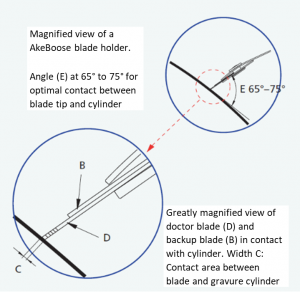
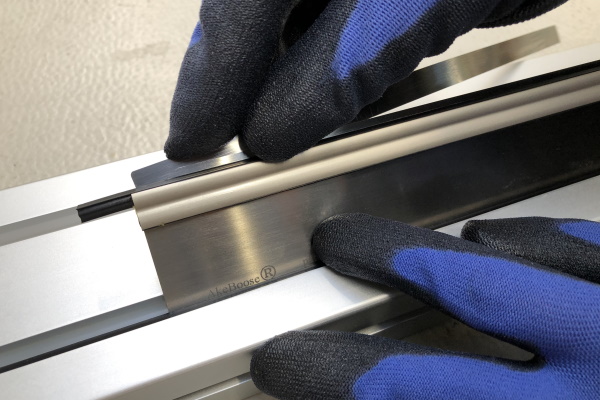
Reduced machine downtime thanks to accelerated blade change process
Operation cost are very difficult to compare as there are many definitions what they are. But one part of the operation cost are the downtime of the press and the man hours needed for setting the press up and changing doctor blades. The unique clamping system of AkeBoose blade holders enables the operator to change the strip steel in seconds. And the best part of it: He can do so right at the press - no need to uninstall the machine holder and take it to a special service area. That saves a lot of time in the blade changing process and reduces the downtime of the press significantly.
The AkeBoose blade holder technology is a small piece of a gravure press but has a big beneficial impact on the quality and cost of gravure printing.
![]()
RELATED TOPICS
![]()
Blade holders for flexible and cost-efficient rotogravure printing
High precision doctoring at reduced operating costs in rotogravure printing. Read more
HiQ doctor blades for a precision ink wipe
High quality Swedish steel doctor blades for all ink types and rotogravure printing requirements. Read more
